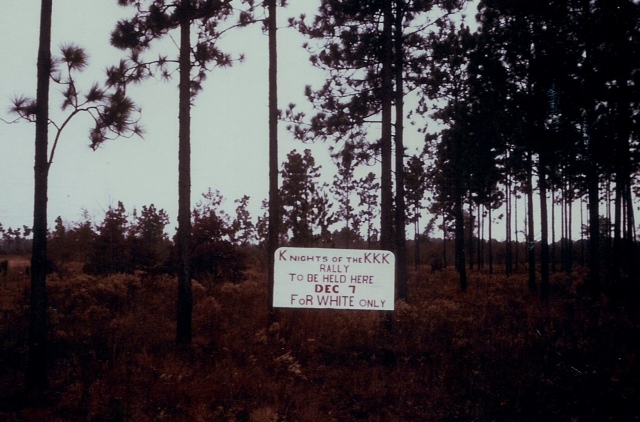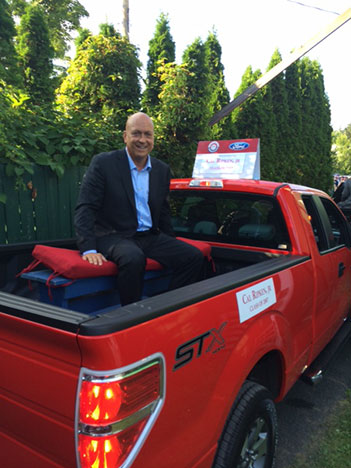
Cal riding in the Parade of Hall of Famers on Saturday.
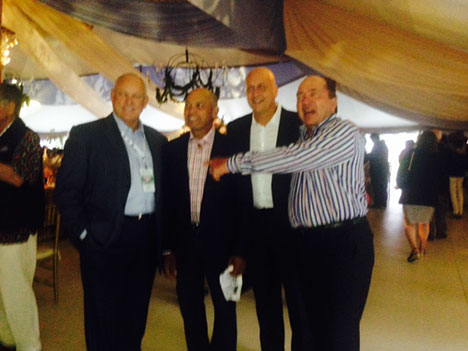
Nolan Ryan, a thin Reggie Jackson, Cal and a pointing Johnny Bench on Friday night.
On Saturday night – purely by chance – we had dinner with Starbucks Founder Howard Schultz and his son Jordan. Exiting the late afternoon reception at the Hall of Museum, Cal saw a lot of fans behind Main Street barricades calling him over asking for his autograph. While he signed I shared a bench with two other guys- Howard Schultz and his son Jordan. My brother Ron knows Howard and I had met him previously in Seattle. The Schultz’s were in Cooperstown to celebrate the Hall of Fame induction of their friend Tony La Russa. (I thought the story LaRussa told at the induction ceremony about his first managerial job under Paul Richards was among the funniest stories told that day. It’s recounted at the end of this download.)
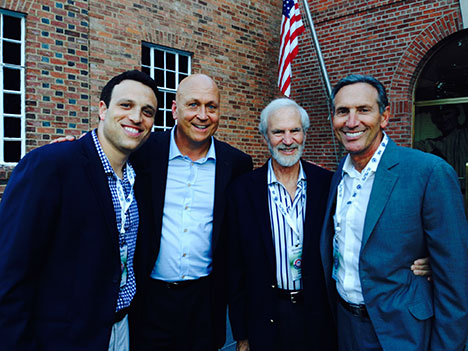
Howard and Jordan were free for dinner and when Cal finished signing we returned to the Otesaga and had dinner on their porch.
Jordan, who I had never met, now lives in NYC. Like his dad (Howard received an athletic scholarship to Northern Michigan) he is athletic and played basketball in college. Professionally he is an NBC sports radio co-host with a Sunday morning talk show, “Kup and Schultz.” I asked him: “So, are you still a good shot?” I got a kick out of the fact that with a little encouragement on my part he was able to share his fifty for fifty sequence from the foul line via his IPhone. Cal pointed out a few rim rattles and I had to note that Nick Staukas from the U of Michigan hit 72 of 76 three point attempts outside in the rain. Jordan was good company, was passionate about his job, and seemed well grounded.
During dinner Cal talked about his new interest in biking and Howard his long standing- both are detail people and lost me after the sixth gear. As I listened to Cal and Howard Schultz during dinner at an idyllic Cooperstown setting during a Hall of Fame induction weekend I had several thoughts: The first was how fortunate am I to be sitting here; the second, that’s a terrific Pinot Noir from Oregon; and what an extraordinary impact Howard Schultz and Cal Ripken, Jr. have had in their lifetimes.
In Cal’s case I believe that everyone who has ever played the game at the highest level is simply awed by The Streak. 2,632 consecutive games beginning May 30, 1982 and ending September 19, 1998. They appreciate the grit required to be put in the line-up and post daily for 16 plus years coupled with the values and approach to everything that make Cal Cal.
In Howard’s case, virtually any person who has started a business and was able to grow it successfully pays homage to Starbucks and hence to Howard. Just think about it. A Brooklyn kid from modest circumstance is able by 2014 to parley a passion for coffee and a unique understanding of what customers and employees really wanted into 21,000 Starbucks with 191,000 employees operating in 65 countries, and an enterprise value of $50 billion. I told Howard that while I enjoyed his first book, “Pour Your Heart Into It”, it was his second that truly struck a chord with me, “Onward” is Howard’s candid story of why he retired as Starbucks CEO in 2000 and eight years later made the decision to return and replace his hand picked successor, Orin Smith, as CEO.
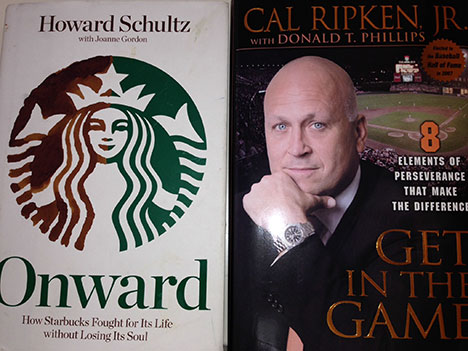
While the “How Starbucks Fought for Its Life without Losing Its Soul” tag may be a bit dramatic for some, as a small business entrepreneur I found “Onward” authentic. It captures the fervor and depth of what Howard believes Starbucks stood for and needed to be, whether one store, one thousand, or one hundred thousand. For me, and I suspect countless others who want to grow something good, it is a must read. Schultz’s experience in rebirthing Starbucks certainly confirms that it is ok for business leaders to purposely use words commonly associated with annual high school graduation speeches in guiding and leading a company. His definition of leadership is as concise as it is real: “At its core, I believe leadership is about instilling confidence in others.”
He and Cal do this naturally both because of what they have accomplished over the course of their professional careers (Howard turned 61 in July and Cal 54 in August) and the fact that they are aligned leaders. By this I simply mean their deeds match their words. As people they are humble and interested in others- a quality not normally associated with celebrities. Howard’s leadership of Starbucks and the leadership of Starbucks’ Board of Directors in 2014 sets an important example for present and future public companies. Starbucks is at the forefront of public companies financially successful long term that strategically use their resources and talent to help the country and local communities address complex social issues in broader and deeper ways.* In Cooperstown I asked Howard why he thought more public companies were not more like Starbucks in this arena. He said this is very tough for public companies and especially so in difficult economic times. True, and I would add it also tough for small private companies as well. If there at all, it is usually a sidebar to their core business strategy. Starbucks’ examples include progressive employee health care policies, introduction of full tuition reimbursement for employees via on-line courses in a partnership with Arizona State University, and a plan to hire 10,000 veterans or their spouses over the next five years.
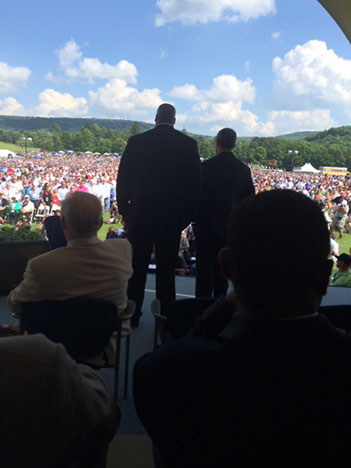
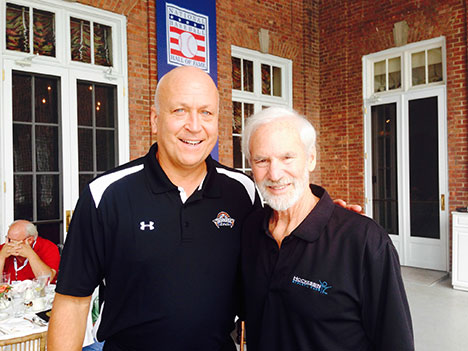







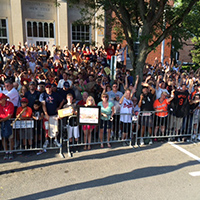
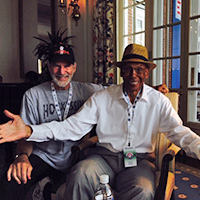
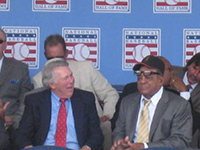
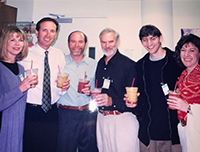
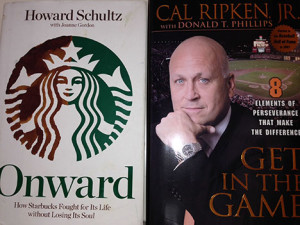
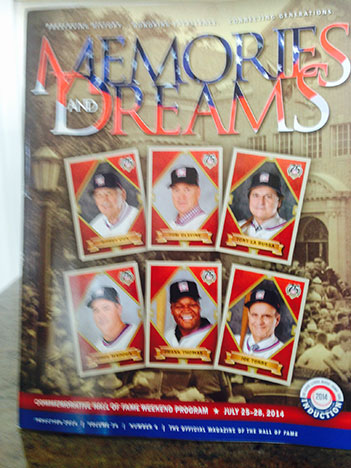 After penning this last sentence I simply stopped writing questioning why I was even making this reference to an old but for me significant memory. Wasn’t this something way out of left field in the context of a special Cooperstown weekend? And who cares? The truth is I do. As I age the more I believe the connection an individual makes with people, events, concepts, and times are not by accident. The history of baseball is intertwined and inseparable from the country’s social history. In real time a Jackie Robinson All Star team of eleven and twelve year olds from Chicago’s south side beat a team from Las Vegas while the events of Ferguson are transpiring. They will represent the United States in the 2014 Championship Game against Korea. I know little of the team’s history, how the league got started, what the kids were like, what the coaches and kids thought about as they tried to win the
After penning this last sentence I simply stopped writing questioning why I was even making this reference to an old but for me significant memory. Wasn’t this something way out of left field in the context of a special Cooperstown weekend? And who cares? The truth is I do. As I age the more I believe the connection an individual makes with people, events, concepts, and times are not by accident. The history of baseball is intertwined and inseparable from the country’s social history. In real time a Jackie Robinson All Star team of eleven and twelve year olds from Chicago’s south side beat a team from Las Vegas while the events of Ferguson are transpiring. They will represent the United States in the 2014 Championship Game against Korea. I know little of the team’s history, how the league got started, what the kids were like, what the coaches and kids thought about as they tried to win the